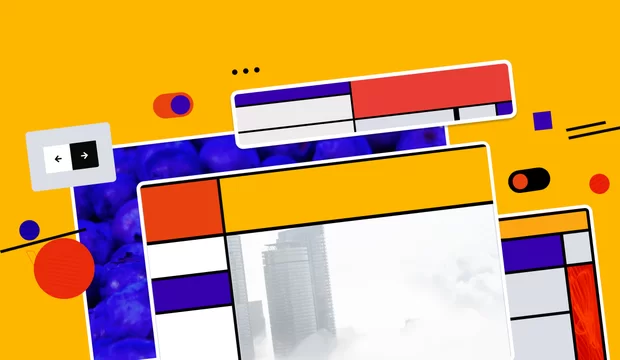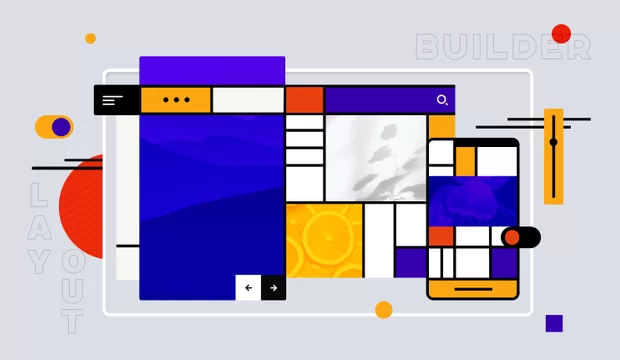Distance learning has become the new normal. Statistics show that the demand for virtual classrooms and interactive whiteboards has doubled during the pandemic. Of course, elearning has technical bottlenecks and lacks live interaction. Not everyone loves it, but the future is happening, and we’ll get used to it. New trends set new challenges:
- educational institutions must capture and correspond to them;
- web studios must formulate a clear and profitable proposal for custom elearning development.
We specialize in Drupal development as this CMS meets the needs of many fields and businesses. This article will discuss elearning development, LMSs and LRSs, and elearning standards, and how to create an LMS. We will list the basic features of an elearning site and ways to implement them with Drupal.
Elearning development
Basic terms
Distance learning operates with three concepts: LMS (learning management system), elearning standards, and LRS (learning record store).
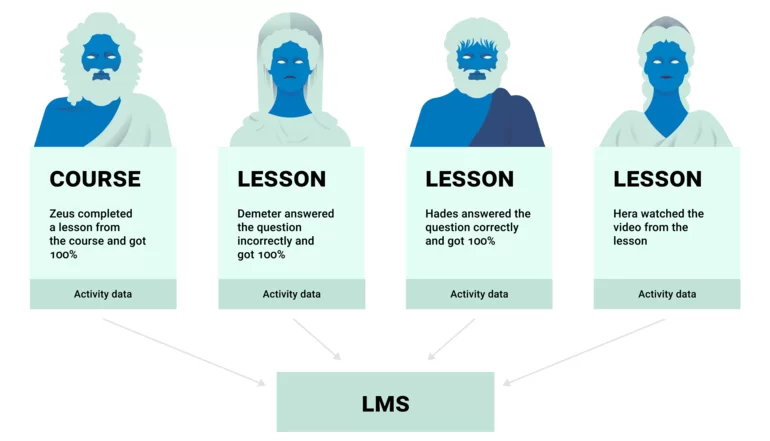
How students use an LMS for group projects
Learning management system
LMS is a web application that helps create and store educational courses and collects training statistics. It is a substitute for the classroom, curriculum, textbooks, class books, record books, and everything else in the offline learning world. The system stores training aids and information about what students have already studied and what results they achieved. The popular platform Moodle is an example of LMS. However, people still have to create training documents for uploading to the LMS.
Elearning standards
A elearning standard is a set of technical standards for distance learning products. It tells developers how to write their code so that it agrees with other elearning software.
In 2001, SCORM (Sharable Content Object Reference Model) became the first and the most popular standard, according to statistics. SCORM is created by the ADL organization that is based at the US Department of Defense. Then, in 2013, the Tin Can API (aka xAPI) appeared, and in 2016, the CMI5 standard was launched by the joint efforts of ADL and the AICC association. We are not going to elaborate on the specifics of each standard. It’s sufficient to say that each additional standard was created taking into account the shortcomings of the previous one.
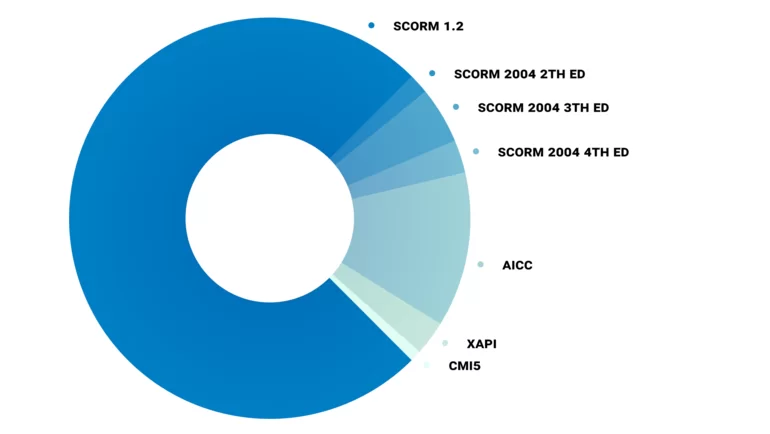
Diagram of courses created according to different elearning standards. Source: xapi.com blog
After training documents have been collected and organized according to the standards, they can be uploaded to the LMS. Most of the LMSs are compatible with SCORM. So you can put all the content you need in SCORM packages, whether it is individual tasks or entire courses, and transfer them to another LMS if you decide to switch.
Tin can vs SCORM
Although SCORM is the standard de facto, the progress does not stand still. xAPI has not replaced SCORM yet, but it is a new and well-developed standard that provides more opportunities for creating the educational process. It takes into account the deficiencies of its predecessor:
- usage of outdated Flash,
- dependence on a browser,
- poor security,
- binding to the same domain in which the LMS is located,
- difficulty to save progress during the course completion.
In addition, xAPI allows you to save the learning results achieved not only on the website but also on smartwatches, interactive simulators, mobile applications, and any other environment.
xAPI is an interim element between the learning environment and the LRS. The learning process becomes deeper and more interesting with such technologies. If you do not want to be limited to a website but want to build a whole ecosystem for training (applications, smartwatches, etc.), we suggest you have a look at the xAPI standard.
Learning record store
LRS is a repository that receives, stores, and returns data about learning experiences and records. You will need an LRS to do anything with xAPI.
Don’t confuse LMS and LRS: LRS only provides data storage and does not have business logic; thus, it does not provide the necessary environment for the educational process. But a LMS can include a LRS.
Everyone involved in elearning product development, from an elearning instructional coordinator to a PHP developer, should have an understanding of these technologies to build an elearning website.
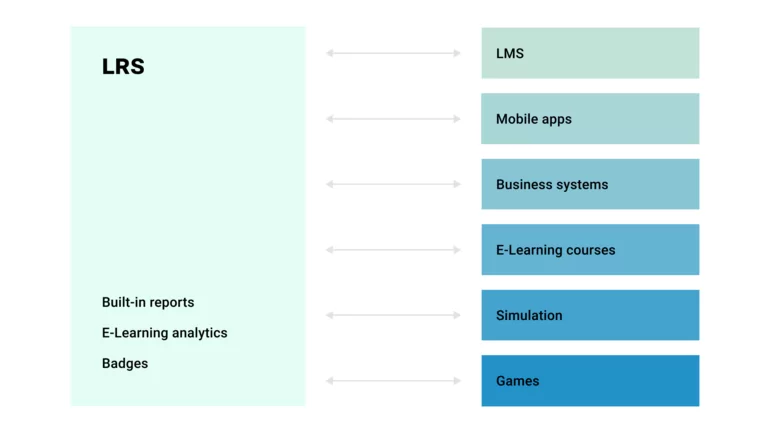
Building an elearning website
Elearning websites should have specific functionality for the organizers of the educational process and students themselves. The compulsory set of features includes:
- content management functionality,
- division of user roles,
- calendar feature,
- tasks and tests,
- tools to display a student's progress,
- badges and certificates of graduation,
- video conferencing,
- newsletter feature,
- chat section,
- registration through social networks.
Now, let's look at technologies that allow you to turn a website into an online school for which you do not need to leave your house.
Drupal for elearning
For many reasons, the Drupal content management system is perfect for educational sites:
- Drupal is an open-source system. This is reflected in the affordable cost of services, flexible development, and high security.
- An educational institution often has many websites for different needs. If each of them has the same modules and features, with the multisite functionality, you can get one codebase for all the websites and update them simultaneously.
- You can easily build an extensive site structure with the help of taxonomy.
- You do not need additional programming knowledge to customize the basic functionality and web design.
- Drupal is written in the PHP language. It has a rather low entry barrier.
- Websites for educational institutions are used by teachers, students, parents, friends, and guests. Each of these groups must have different access rights, and Drupal takes this into account.
- Drupal websites are mobile-friendly by default.
- Drupal's interface has been localized for over 100 languages, which allows you to develop websites for educational institutions around the world.
- Website users receive tools for collaboration work.
How to create an elearning website on Drupal
Drupal distributions and modules for distance learning
Enthusiasts from the Drupal community, us included, are working on a lot of useful modules and distributions that make online learning as good as face-to-face learning. In our list, you will find only those website templates and modules that are still supported by the community.
Opigno LMS
Opigno is a Drupal-based distribution that allows you to turn a CMS into an LMS. Opigno LMS is fully compliant with SCORM and xAPI. It integrates with the JavaScript technology H5P, making it possible to create rich interactive training content.
The Opigno Messaging and Opigno Forum modules provide opportunities for debate among students. The Opigno Instructor-led Trainings module is needed to simulate the presence of a teacher and monitor students' attendance and rates.
The system has its application store where apps can be downloaded and installed without having to update the LMS.
BigBlueButton API
Since 2007, the BigBlueButton open-source system has been used in distance learning for video conferences. Teachers and students can share pictures, videos, PDFs, Word documents, show presentations, communicate in chat rooms, and even "raise a hand" if one wants to speak up.
The BigBlueButton API was released in 2010. It can be integrated with many systems, including the Moodle LMS, Redmine project management system, Drupal, WordPress, and Joomla.
Opigno Webex App
WebEx is another conference service belonging to the Cisco organization. Developers give organizers of the instructional process the ability to create class schedules and send invites to students by including Webex as an add-on tool in Opigno using the Opigno Webex App module.
Course
Course allows you to build an online course with any number of steps and consisting of any content entities, i.e. an item of data that includes text, images, attachments, etc. Course credit is used as a substitution for a student's record book.
Quiz
One of the ways that teachers and students can monitor the progress and effectiveness of the curriculum is to take tests and surveys. The Quiz module allows you to create multiple-choice questions and save the results in a database. Progress and results can be displayed both during and after them.
For more quiz modules, check out this article: 10 Drupal modules for quizzes.
Certificate
A diploma or certificate confirms the completion of the course, so this is a mandatory functionality for distance learning websites. The Certificate module interface helps to format such documents as a PDF file, which is facilitated by HTML templates and integration with WYSIWYG.
Open Digital Badging
The digital badges on the student's profiles are proof of their success during the learning phase. The Mozilla Open Badges program is responsible for creating badges, and the Open Digital Badging module is a provider for Drupal websites. If the website works on Opigno, the Opigno Mozilla Open Badges App will help to befriend it and Mozilla Open Badges.
Social Login and Social Share
Logging in through Facebook, Twitter, or LinkedIn, and sharing content through them is already the default option for most websites. Social Login and Social Share are solving these problems on a Drupal website.
Custom elearning development with Drupal
Drupal’s global popularity has four allies: flexibility to create anything on this CMS, scalability, a big responsive community, and a low entry threshold that makes the system accessible to people even without programming skills.
As you can see from the article, Drupal itself resembles a new apartment still waiting to be finished and decorated. So web development is as specific (if not more) as renovation and interior design. Therefore, a distance education site will require several professionals with knowledge of HTML, CSS, PHP, React, and other languages and frameworks to integrate and configure modules and distributions correctly. If you know all this, we are proud of you, and if you don’t, we are ready to take over your website. Tell us about your project in your email to hello@adcillc.com.



